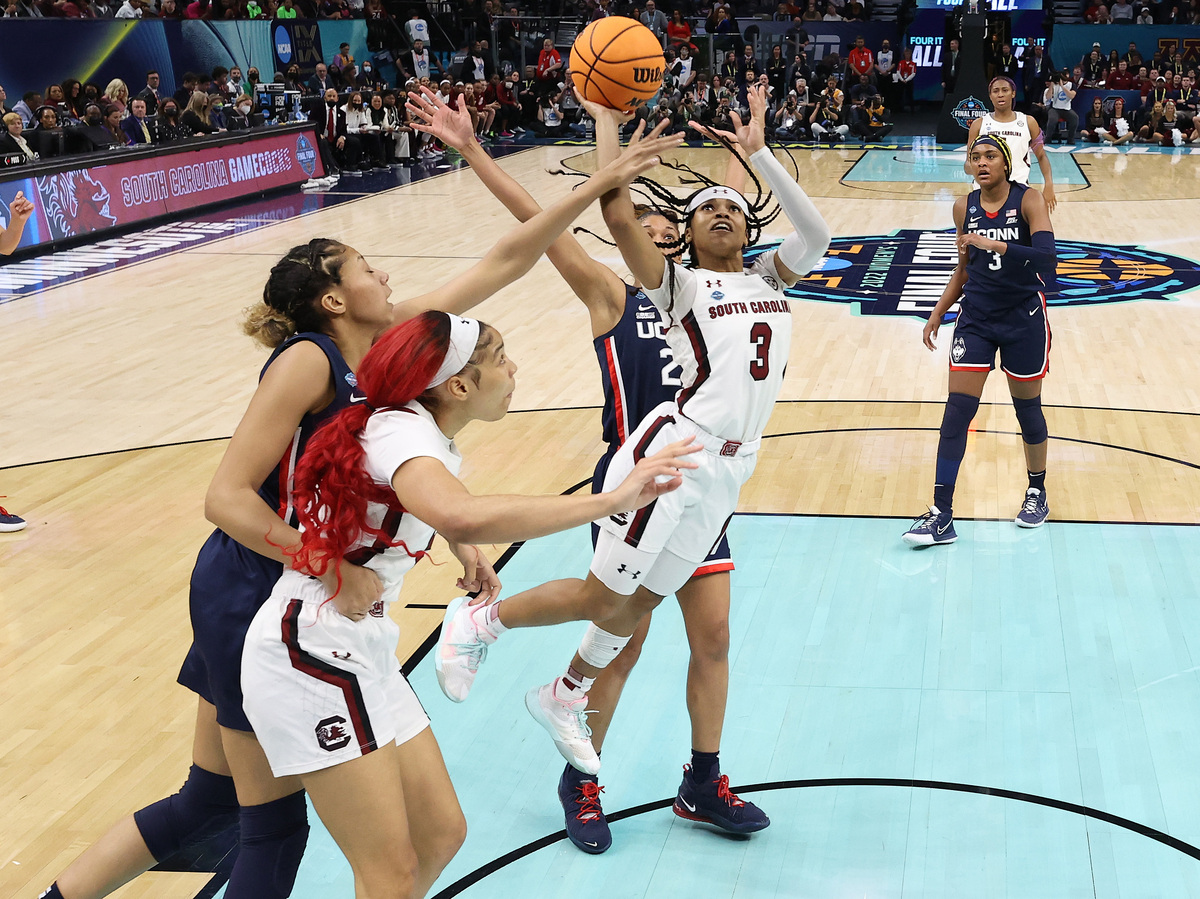
Destanni Henderson of the South Carolina Gamecocks drives to the basket against the Connecticut Huskies in the championship game of the 2022 NCAA Women's Basketball Tournament. Andy Lyons/Getty Images hide caption

Destanni Henderson of the South Carolina Gamecocks drives to the basket against the Connecticut Huskies in the championship game of the 2022 NCAA Women's Basketball Tournament.
Andy Lyons/Getty ImagesWhen it comes to TV ratings, women's college basketball is trending upward - even as the men's game is losing viewers. When it comes to resources and media coverage? There's still a wide gap between the men and women.
NPR's Mary Louise Kelly speaks with Chantel Jennings, senior writer covering women's basketball for The Athletic, about the factors that contribute to that gap and how the women's game could overcome them.
Email us at
This episode was produced by Gabe O'Connor, and edited by William Troop. Our executive producer is Sami Yenigun.

 Live Radio
Live Radio